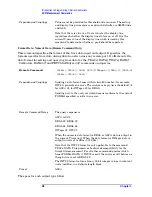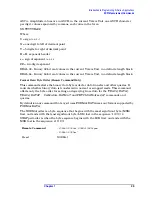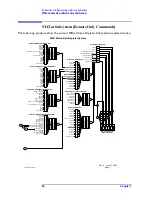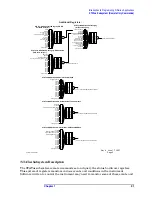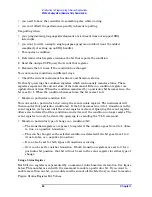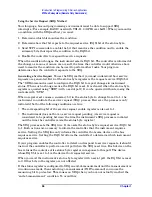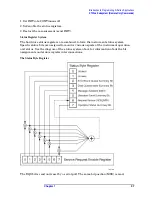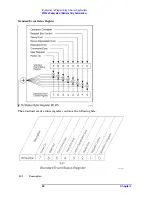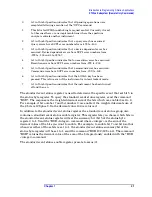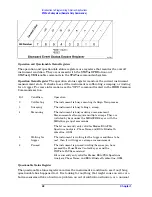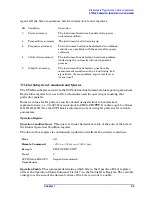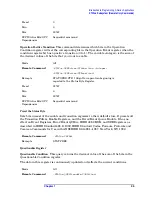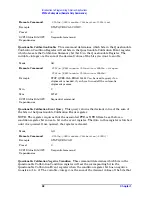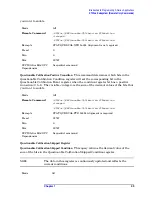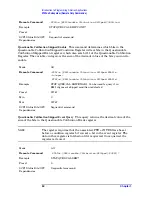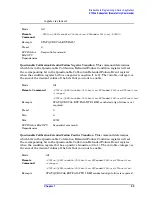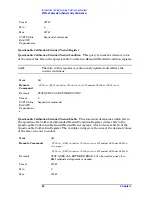
Chapter 1
41
Introduction to Programming X-Series Applications
STATus Subsystem (Remote Only Commands)
The standard event status register is used to determine the specific event that set bit 5 in
the status byte register. To query the standard event status register, send the command
*ESR?. The response is the weighted decimal sum of the bits which are enabled (set to 1).
For example, if bit number 7 and bit number 3 are enabled, the weighted decimal sum of
the 2 bits is 128 plus 8. So the decimal value 136 is returned.
In addition to the standard event status register, the standard event status group also
contains a standard event status enable register. This register lets you choose which bits in
the standard event status register will set the summary bit (bit 5 of the status byte
register) to 1. Send the *ESE <integer> command where <integer> is the sum of the
decimal values of the bits you want to enable. For example, to enable bit 7 and bit 6 so that
whenever either of those bits is set to 1, the standard event status summary bit of the
status byte register will be set to 1, send the command *ESE 192 (128 + 64). The command
*ESE? returns the decimal value of the sum of the bits previously enabled with the *ESE
<integer> command.
The standard event status enable register presets to zeros (0).
0
A 1 in this bit position indicates that all pending operations were
completed following execution of the *OPC command.
1
This bit is for GPIB handshaking to request control. Currently it is set
to 0 because there are no implementations where the spectrum
analyzer controls another instrument.
2
A 1 in this bit position indicates that a query error has occurred.
Query errors have SCPI error numbers from -499 to -400.
3
A 1 in this bit position indicates that a device dependent error has
occurred. Device dependent errors have SCPI error numbers from
-399 to -300 and 1 to 32767.
4
A 1 in this bit position indicates that an execution error has occurred.
Execution errors have SCPI error numbers from -299 to -200.
5
A 1 in this bit position indicates that a command error has occurred.
Command errors have SCPI error numbers from -199 to -100.
6
A 1 in this bit position indicates that the LOCAL key has been
pressed. This is true even if the instrument is in local lockout mode.
7
A 1 in this bit position indicates that the instrument has been turned
off and then on.


